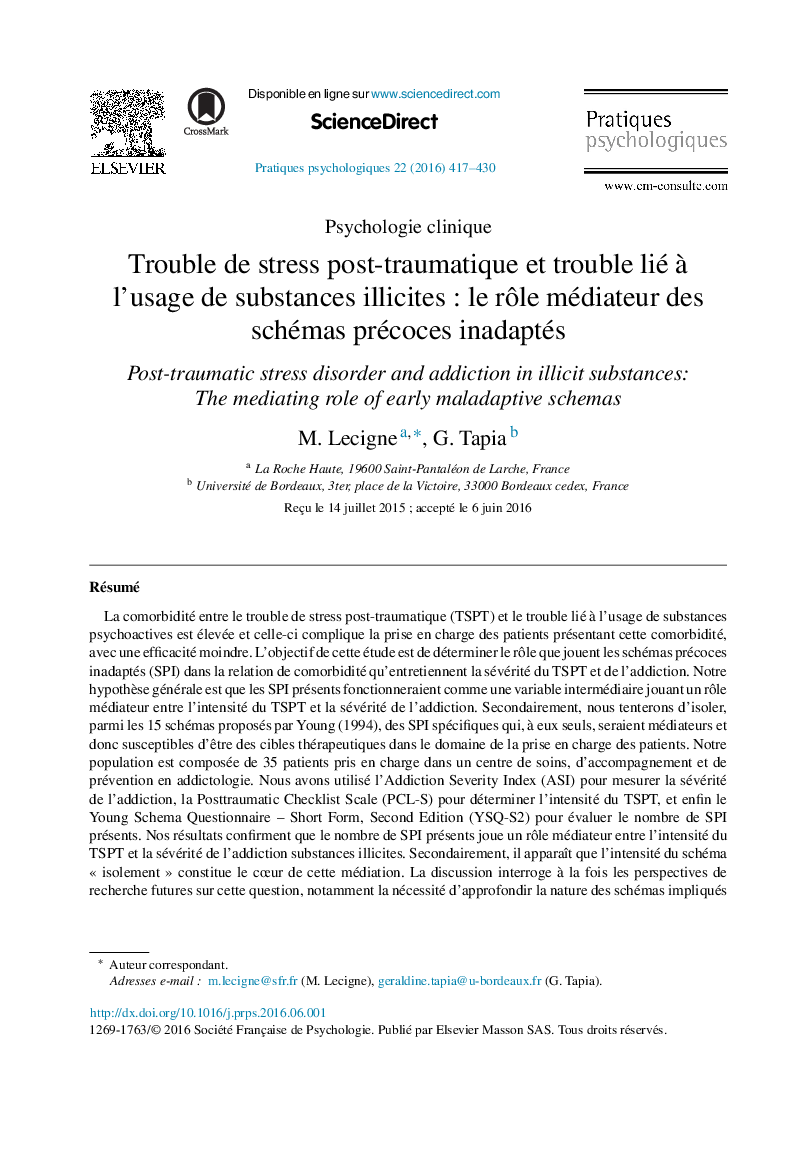| Article ID | Journal | Published Year | Pages | File Type |
|---|---|---|---|---|
| 5036373 | Pratiques Psychologiques | 2016 | 14 Pages |
Abstract
The comorbidity between Post-traumatic stress disorder (PTSD) and substance use disorder (SUD) is high and this one complicates the management of patients presenting this comorbidity, with a lesser efficiency. The objective of this study is to determine the role that play early maladaptive schemas (EMS) in the relation of comorbidity that maintain the severity of PTSD and SUD. Our general hypothesis is that EMS presents would work as an intermediate variable playing a mediating role between the intensity of PTSD and the severity of SUD. Secondarily, we shall try to isolate, among 15 schemas proposed by Young (1994), EMS specific which, by themselves, would be mediating and thus susceptible to be therapeutic targets in the field of the management of patients. Our population consists of 35 patients taken care in a center of care in addictology. We used the Addiction Severity Index (ASI) to measure the severity of addiction, Posttraumatic Checklist Scale (PCL-S) to determine the intensity of PTSD, and finally Young Schema Questionnaire - Short Form, Second Edition (YSQ-S2) to estimate the number of present's EMS. Our results confirm that the number of present's EMS plays a mediating role between the intensity of PTSD and the severity of SUD. Secondarily it seems that the intensity of the schema “isolation” constitutes the heart of this mediation. The discussion questions at the same time the future perspectives of research about this question, in particular the necessity of deepening the nature of schemas implied according to the addictology's patient's level of PTSD, as well as the clinical fallout from these results on the current models of their coverage.
Keywords
Related Topics
Social Sciences and Humanities
Psychology
Applied Psychology
Authors
M. Lecigne, G. Tapia,
